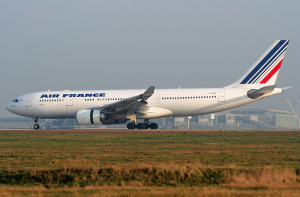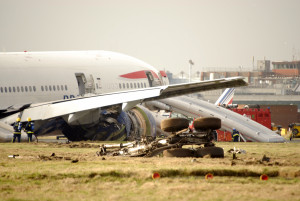It is often said that a pilot’s job is hours of boredom punctuated with moments of sheer terror. This is probably less true for flight simulation because you, as the pilot of the virtual aircraft, have one factor on your side, which can be both a boon and a bane.
Predictability.
This comes from you being able to toggle failures, choose the failures you want, and more. However, we don’t exercise this option very often: instead, we just leave all the failures off and simulate normal flights all the time. Unfortunately, this becomes detrimental to the learning experience in the long run, because not only is the lack of a chance of failure completely unrealistic, but if there ever comes a time when you need to solve a problem created in adversity, you will likely encounter great difficulties in solving that problem.
Being unprepared can lead to disastrous results…
To illustrate this concept, let’s look at a real-world example. At approximately 2 AM UTC, Air France Flight 447’s pitot probes became clogged with ice. This resulted in the failure of the autothrust, followed by the autopilot. The pilots were then forced to take control. Soon after this, the wings began to aerodynamically stall. During a stall, since the airflow over the wing is disrupted, the angle of attack must be reduced in order to restore normal airflow. However, the opposite was done: the pilots kept the plane in a nose-up attitude for the entire stall-and-fall. This fundamental mistake resulted in the crash of the plane. When it comes to the action of making the mistake, this could be a result of both an over-reliance on the automated systems and a false sense of confidence that nothing can go wrong.

That’s an extreme though!
Though the above situation is an extreme, similar situations can be averted by practicing with simulated failures. By introducing failures in your training flights and the probability of failures in your real flights, you learn how to react to different kinds of situations, which allows you to exercise vital problem-solving skills. Even if you encounter a different problem than one you have seen before, the resourcefulness you would have gained from working around failures will give you some good ideas, at least one of which will allow you to solve this problem. You add an extra degree of realism to your flights. Perhaps most of all, you add a bit more fun into your flights: the satisfaction you gain out of solving a challenging problem is unparalleled.
Don’t push yourself too hard immediately!
It is a very bad idea to go all-out on your first time and toggle extremely challenging failures or many failures simultaneously. Why? If you don’t end up landing the plane safely after many tries, chances are your confidence will tank. We all know that only bad things can result from this. Hence, build up your confidence gradually.
Instead, try failing an altimeter or a speed indicator and see how you react. If you succeed, then great! Move on to something more challenging. If you didn’t succeed, it’s even better! Here, you learned what didn’t work, which is more valuable than knowing what works: in a desperate time, you now know exactly what not to try, which buys you valuable time. If you continue in this manner, with a bit of practice, you will build confidence, expertise, a deeper understanding of your aircraft, and problem-solving skills which will accompany you on every flight.
This ingenuity can save hundreds of lives…
Now, we’ll look at a success story. On a cold January day at London Heathrow, British Airways flight 38 was on its final approach to runway 27L. As the power was increased, the increase in fuel flow resulted in the movement of accumulated ice crystals, which blocked the crucial fuel-oil heat exchanger (FOHE). This led to both engines simultaneously shutting down just a few miles from the runway and a few hundred feet over homes in Hounslow. While the situation at this point looks bleak, the captain makes a genius move: he retracts the flaps a few notches. As we all know, this reduces drag, which gave him a few more crucial meters of flight. This quick move got the 777 over the perimeter fence and to a crash-landing within the airport grounds. The quick thinking of the captain led to the survival of all on board. Such resourcefulness arises from training with the simulated failures, and with enough training, you could end up making a similar, clever move that would save your plane.

To sum things up, it’s not a great idea to keep on simulating flights which have no potential for failure in them. Always include that uncertainty; it will train you for interesting situations which you will likely encounter in the future.
Remember, we are failing to succeed, not succeeding to fail.
Throttle On!
This article was posted in Blog, Challenges, Emergency Procedures, Flightsim Tips, Human Factors, Maneuvers, Safety, Uncategorized
Please note: We reserve the right to delete comments that are snarky, offensive, or off-topic. If in doubt, read the Comments Policy.

